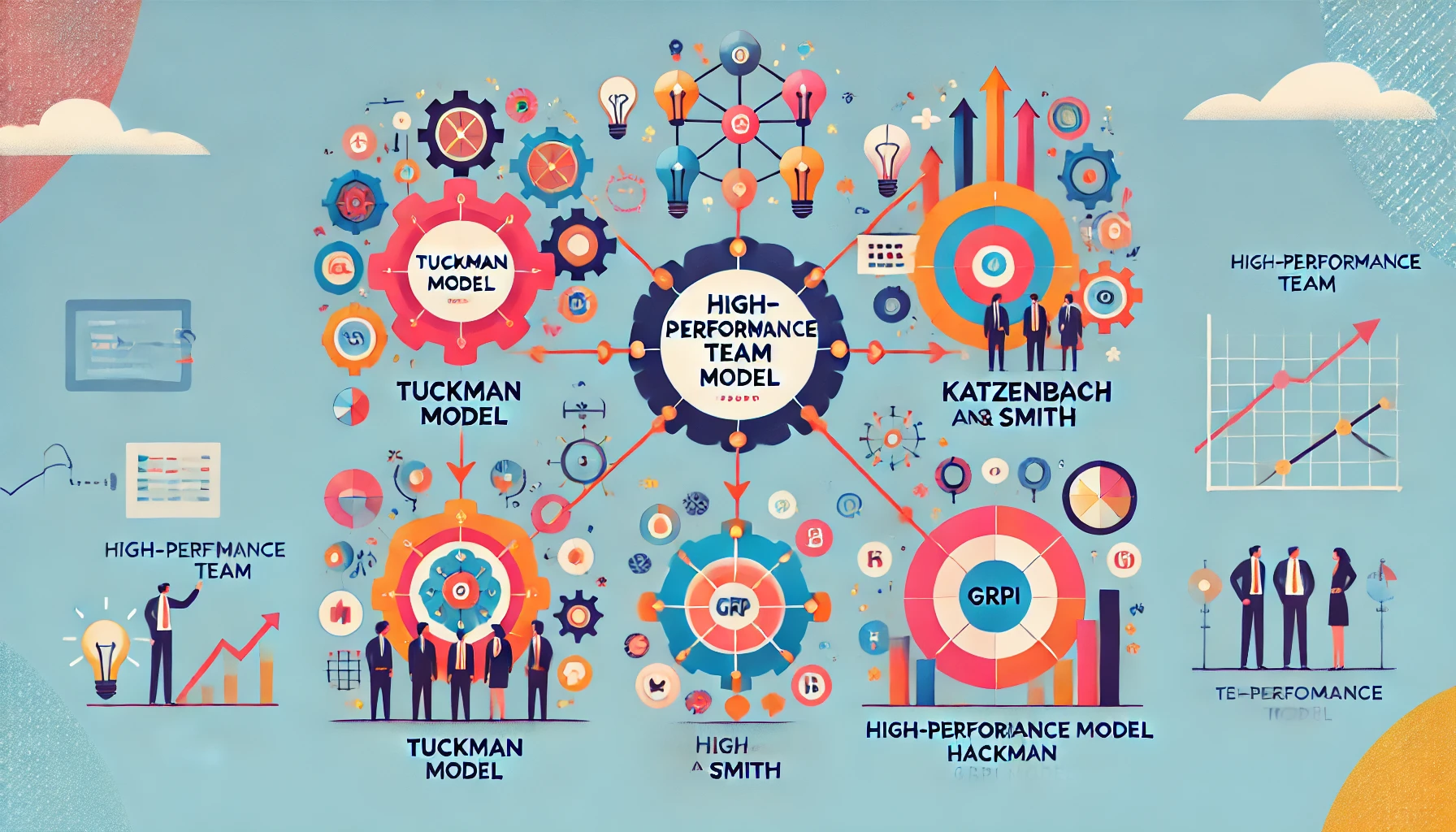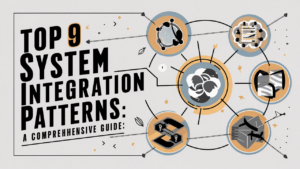Building high-performing teams is crucial for organizational success. Teams that function cohesively and effectively can outperform others, driving productivity and innovation. The image above highlights five key models—Tuckman Model, Katzenbach and Smith Model, High-Performance Team Model, Hackman Model, and GRPI Model—that guide team development and performance optimization.
In this blog, we will dive deep into these models, exploring how they contribute to the creation of high-performing teams, and providing insights on implementing these strategies in your organization.
1. The Tuckman Model: Stages of Team Development
The Tuckman Model, developed by psychologist Bruce Tuckman in 1965, outlines four key stages that teams go through in their journey toward high-performing teams:
Forming:
This is the initial stage, where team members meet and establish goals. At this point, team members are often unsure of their roles and responsibilities.
Storming:
As the team starts working together, conflicts often arise as members express their opinions and vie for influence.
Norming:
In this phase, teams begin to resolve conflicts, establish clear roles, and develop cohesion. Shared goals and rules become more defined.
Performing:
The final stage is where the team reaches optimal productivity, efficiently working towards goals with minimal friction.
The Tuckman Model emphasizes team cohesion and outlines how managing the “storming” phase is essential for moving toward a high-performing teams.
2. Katzenbach and Smith Model: Commitment and Accountability
The Katzenbach and Smith Model focuses on the specific skills and shared accountability needed for teams to excel. It identifies three critical areas for team success:
Skills:
Teams need a blend of problem-solving, technical, and interpersonal skills to tackle challenges efficiently.
Accountability:
Team members must hold themselves and each other accountable. Accountability is both individual and collective, ensuring mutual responsibility.
Commitment:
A strong commitment to common goals and a meaningful purpose keeps the team driven and aligned.
This model helps emphasize personal growth within the team while fostering mutual accountability and shared goals, which are critical in creating a sustainable high-performance environment.
3. High-Performance Team Model: A Holistic Approach
The High-Performance Team Model integrates performance development and change management elements to create a well-rounded, high-functioning team. Two core aspects underpin this model:
Performance Development:
Ensuring continuous development through communication, meeting alignment, accountability, and support systems.
Change Management:
Teams must remain adaptable and committed to evolving circumstances, whether it’s through new insights, relationship dynamics, or external pressures.
By aligning performance development with change management, this model allows teams to remain flexible while focusing on sustained high performance. The model promotes an integrated approach to team growth, continuously enhancing performance and adaptability.
4. Hackman Model: Core Dimensions of Team Effectiveness
The Hackman Model, developed by Richard Hackman, is based on the belief that team effectiveness is driven by certain core dimensions, psychological states, and outcomes. These are:
Core Dimensions:
The model highlights essential elements such as skill variety, task identity, autonomy, and feedback. These dimensions give team members a sense of ownership and control over their work.
Psychological States:
High-performing teams experience a sense of meaningfulness in their work, take responsibility for outcomes, and have a deep understanding of the impact of their actions.
Outcomes:
When the core dimensions and psychological states align, the team experiences high motivation, job satisfaction, and work quality while reducing absenteeism and turnover.
The Hackman Model emphasizes the importance of autonomy and feedback, which drive individual and team motivation. These factors foster a healthy and productive work environment.
5. GRPI Model: Diagnosing Team Performance
The GRPI Model, developed by organizational theorist Dick Beckhard, is a practical framework used for assessing and improving team performance. It breaks down team functioning into four key areas:
Goals:
The clarity of team objectives and shared purpose.
Roles:
A clear definition of who is responsible for what within the team.
Processes:
How well the team communicates and collaborates to achieve its goals.
Interpersonal Relationships:
The quality of interpersonal dynamics and how effectively team members interact on a personal level.
The GRPI Model is useful for diagnosing potential performance issues by addressing each of these areas systematically. Teams that optimize their goals, roles, processes, and interpersonal relations are well-positioned to achieve high-performing teams.
Conclusion: Building and Sustaining High-Performing Teams
Each of these models offers valuable insights into building and maintaining high-performing teams. The Tuckman Model focuses on the natural stages of team development, while the Katzenbach and Smith Model emphasizes the role of accountability and skills. The Hackman Model highlights core dimensions that drive motivation, and the GRPI Model provides a comprehensive diagnostic framework for enhancing team performance. Lastly, the High-Performance Team Model integrates performance development with change management, ensuring teams remain adaptable and productive.
By understanding and applying these models, organizations can create more effective teams that collaborate efficiently, innovate consistently, and achieve their shared goals.

























